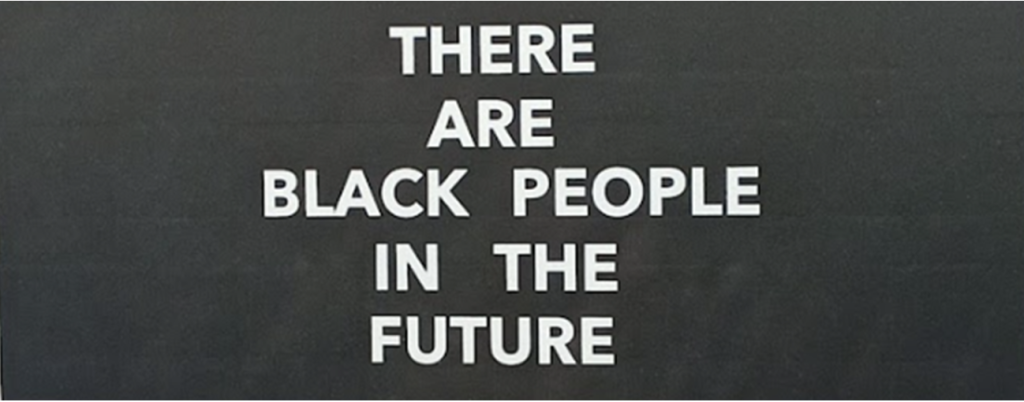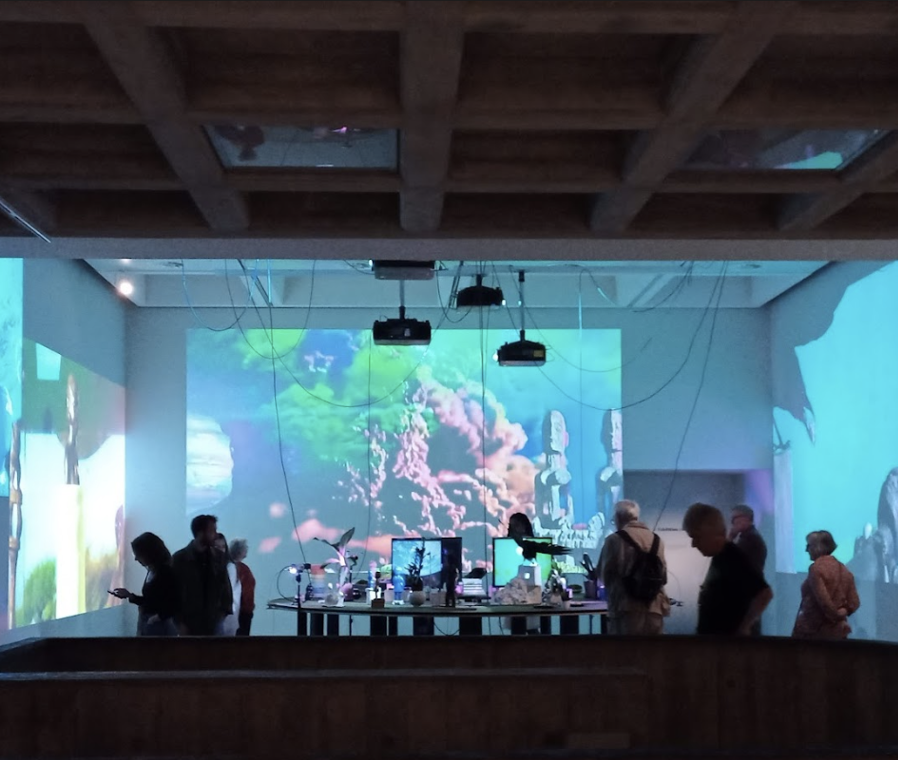
This is the domain of the Strange, the Marvellous, and the Fantastic… Here is the freed image, dazzling and beautiful, with a beauty that could not be more unexpected and overwhelming. Here are the poet, the painter, and the artist, presiding over the metamorphoses and the inversions of the world under the sign of hallucination and madness.
Suzarine Cesaire Tropiques, 1941
IN THE BLACK FANTASTIC
Written by JUDITH RICKETTS
Pure Profile
04 Sept 2022
In the Black fantastic visualises the virtual hierarchies, rooted in societal colonial constructs as the central theme that surface as connective material in this series of searching enquiries.
Ekow Eshun curator of the eleven artists from African diaspora, cites myth, AfroFuturism, and speculative fiction as vehicles to interrogate the racialised threads which suffix their lived reality. This response is crafted from the question; what does it mean to be Black in the world?
This post highlights one of the artists response to the question, highlighting five of the other artists through photograph while listing the remaining.
Collectively the artists’ positions are that the conceptual scientific frame which include the anthropology of race, is in itself, just that; a socially constructed concepts, invention and a mythology. Its virtual hierarchies are tightly bound invisible layers on the black body an ingredient of restrictive notions of control. An added ingrediency in the discourse of anthropologies are ideas which ‘naturally’ connects ideas of civilisation with whiteness and the colonisers.
Nonetheless in the Eurocentric position, these concepts play a number of significant yet unseen roles in our embodied thinking, being, and sense of belonging in the material world.
These artists simultaneously bring those invisible constructions and connections into question, by deconstructing, appropriating and assigning new significance on the body in order to position themselves beyond the original. This significance is constructing futures, from new ways of seeing, as new fictions, and ultimately new ways of being a Black person in the world.
“Tapping into this black imaginary helps us to envision what we are not meant to envision: complex black selves real and enactable black power, rampant and unfetishized black beauty”
Elizabeth Alexander, The Black Interior, 2004

Nick Cave, Soundsuit, 2014
A silent embodied spectacle presides over the opening room; it is Nick Cave’s Soundsuit, 2014, to paraphrase Cave a “suit of armour for protection against injustice in the world” [i]
designed to conceal the body, forcing the viewer to look without prejudice. The series was started in response to the brutal killing of Rodney King, 30 years ago[ii], another was made in 2021 for George Floyd.
The artists in this collection of works construct mythologies, fictions from the material appropriated freeing the body in question from the its earthly, time bound, physicality illustrating new avenues of possibilities with perspectives beyond the current view.
[i] Goldstein, C. (2022). ‘I Was Building This Suit of Armor’: Watch Nick Cave Sew His ‘Soundsuits’ for Protection Against Injustice in the World. [online] Artnet News. Available at: https://news.artnet.com/art-world/i-was-building-this-suit-of-armor-watch-nick-cave-sew-his-soundsuits-for-protection-against-injustice-in-the-world-2122739 [Accessed 4 Sep. 2022].
[ii] The Museum of Modern Art. (n.d.). Nick Cave. Soundsuit. 2011 | MoMA. [online] Available at: https://www.moma.org/collection/works/156386 [Accessed 4 Sep. 2022].
 Hew Locke, How Do You Want Me?, 2007
Hew Locke, How Do You Want Me?, 2007

Lina Iris Viktor, second, 2018.

Lina Iris Viktor, installation view
Lina Iris Viktor. (n.d.). In the Black Fantastic. [online] Available at: https://www.linaviktor.com/in-the-black-fantastic [Accessed 12 Sep. 2022].

Wangechi Mutu, The End of eating Everything, 2013.
Video animation, 8 minutes 10 seconds
For ‘The End of eating Everything’, Mutu wanted to create ‘a film that felt like the collages had come alive’. Singer and songwriter Santigold features as a gluttonous planetary figure, a metaphor for humankind’s overconsumption. She represents the Earth at the end of time, evolving into something both grotesque and spectacular.

Rashaad Newsome, Ansista, 2019
Work on display using: African mahogany wood, silicone, leather, metal, textile, resin, paint and Swarovski crystal
Ansista depicts a figure frozen in a dramatic vogue dip. Its lower body is made from a sex doll while its wooden face is influenced by an early-twentieth-century mask created by the Chokwe people of Central Africa. Men would typically don this kind of mask along with wooden breasts to perform a dance in honour of women. Newsome draws connections between this tradition and the vogue ballroom scene, which is a reference throughout his work. In The e Black Fantastic, exhibition panel.

Cauleen Smith, installation view.
She explores the utopian possibilities of community and artistic expression. Smith is frequently inspired by African American artists, including speculative fiction writers and pioneering musicians. Epistrophy shares its name with a composition by the jazz pianist Thelonius Monk. It is also a literary term, meaning a phrase in music or literature that is repeated for emphasis. The found objects assembled on the table are each of personal significance to the artist who describes them as an ‘archive of associations, travels, affections, desires, questions, and longings’. They are inserted via live-feed projections into video footage of vast landscapes, elevating the everyday into something transcendental.
Smith’s watercolour paintings are part of a series called the BLK FMNNST Loaner Library. The paintings present the covers of books ‘personally beloved’ by the artist, many relating to race and gender liberation struggles. Each worn copy is held up for the viewer’s attention by an anonymous hand. Smith began the project as an attempt to introduce young activists to the texts that informed her own political and social consciousness. ‘I wanted these books to be noticed and, in our photo-saturated world, drawing them slowed people down and invited renewed interest.’ In The Black Fantastic, exhibition panel.

The Destiny of Earthseed Is to take root among the stars. It is to live and to thrive on new earths. It is to become new beings and to consider new questions. It is to leap into the heavens Again and again. It is to explore the vastness of heaven. It is to explore the vastness of ourselves.
Octavia E. Butler Parable of the Sower, 1993
ADDITIONAL FEATURED ARTISTS
Sedrick Chisom
Ellen Gallagher
Kara Walker
Chris Ofili
Exhibition Details
www.southbankcentre.co.uk. (n.d.). In the Black Fantastic. [online] Available at: https://www.southbankcentre.co.uk/whats-on/art-exhibitions/black-fantastic [Accessed 6 Sep. 2022].
